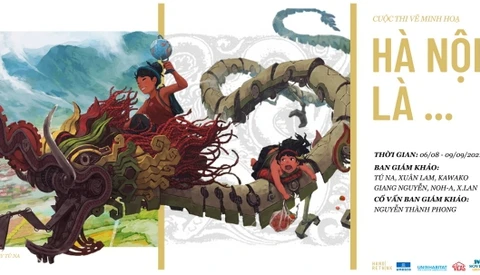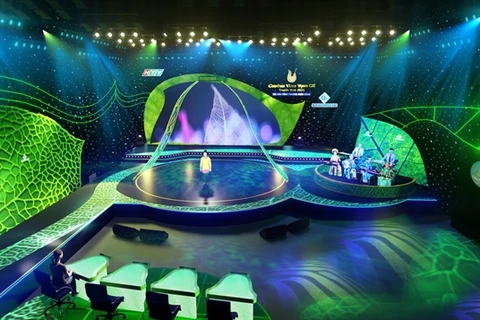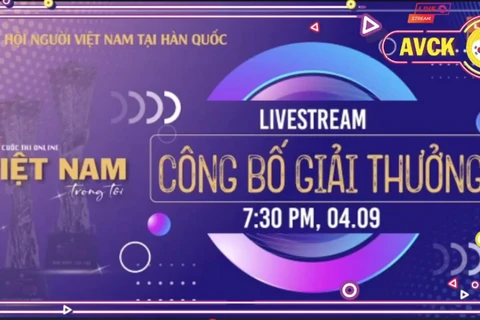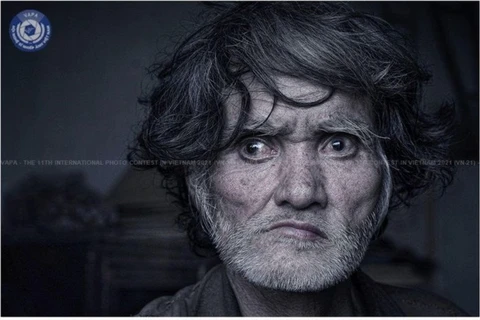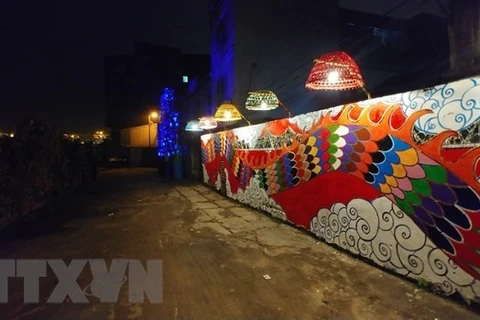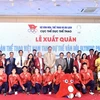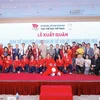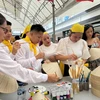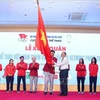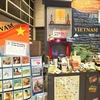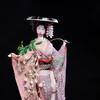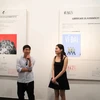 Hanoi’s Street Vendors” by Dang Thai Tuan has won the first prize at the “Hanoi is…” illustration contest. (Photo courtesy of the organisers.
Hanoi’s Street Vendors” by Dang Thai Tuan has won the first prize at the “Hanoi is…” illustration contest. (Photo courtesy of the organisers. The second prize went to “Hanoi by Night” by Tran Phat, “Mind in the Cloud” by Ha Manh Hieu, "Mot bat bun ngan” (A Bowl of Fresh Noodle with Duck Meat) by Ton Nu Thi Bich and “Hanoi Collage” by Nguyen Huu.
Nearly 250 young artists across the country and abroad have submitted their entries to the contest, which aims to promote the title Hanoi -- Creative City awarded by UNESCO in 2019. It is organised by the UN cultural agency UNESCO, the UN Human Settlement Programme (UN-Habitat), and the Vietnam Institute of Culture and Arts Studies (VICAS) with the companionship of the Vietnam Local Artist Group (VLAG).
With the evocative theme “Hanoi is…”, young artists have come up with unconventional and refreshing ideas integrated with a personal emotion to portray their own unique Hanoi. The city has been illustrated in digital and silk painting, collage art, lacquer, among others.
Recognised as a UNESCO Creative City of Design in 2019, Hanoi has committed to placing culture and creativity at the core of its sustainable development, with a wider vision to become a leading creative hub of Southeast Asia.
To support the commitment of the city, UNESCO is leading the project Mobilising Cultural Dynamics and Youth Participation towards Hanoi Creative Capital with the slogan “Hanoi Rethink” together with other two implementing partners UNIDO and UN Habitat. This project will support the city to implement its new strategic vision of a Creative City of Design, harnessing its cultural assets and youth participation as key agents for innovation, creativity, and social change.
One of the key outcomes of the project is to empower young Vietnamese creative talent to influence and contribute to the new development agenda of Hanoi as the Creative Capital with innovative ideas and actions.
The Vietnamese capital became a member of the UNESCO Creative Cities Network in the field of design.
The municipal Department of Culture and Sports said although Hanoi is strong at many fields of creativity, it decided to apply for the status in terms of design since this area has wide coverage, is closely linked with other fields, and can reflect the city’s potential and strength in bringing into play its creativity.
It has met the standards for a creative city of design, including a developed design industry, multiple opportunities for creating designs from natural materials and conditions, and the presence of design groups with frequent activities.
The department said joining the UNESCO network is the first but significant step for Hanoi to raise its standing and create a new and more attractive image of the city.
Local authorities noted Hanoi is the political - administrative centre and a major hub in terms of culture, science, education, economy and international transactions of Vietnam. The city also boasts historical and cultural quintessence as seen through a number of national and international tangible and intangible cultural heritages, along with hundreds of traditional craft villages.
Additionally, it gathers talents and intellectuals from across the country in research centres, academies, universities and colleges, which is a favourable condition for it to receive and popularise knowledge and new technology which are important factors in the development of cultural and creative industries.
A total of 66 cities were designated as UNESCO Creative Cities in 2019. Apart from Hanoi, the seven other creative cities of design are Asahikawa (Japan), Baku (Azerbaijan), Bangkok (Thailand), Cebu City (the Philippines), Muharraq (Bahrain), Querétaro (Mexico), and San José (Costa Rica).
The UNESCO Creative Cities Network, founded in 2004, aims to enhance cooperation among cities which recognised creativity considered a strategic factor of sustainable development.
It recognises seven factors - craft and folk arts, media, film, design, gastronomy, literature, and music - as creative fields./.
VNA
